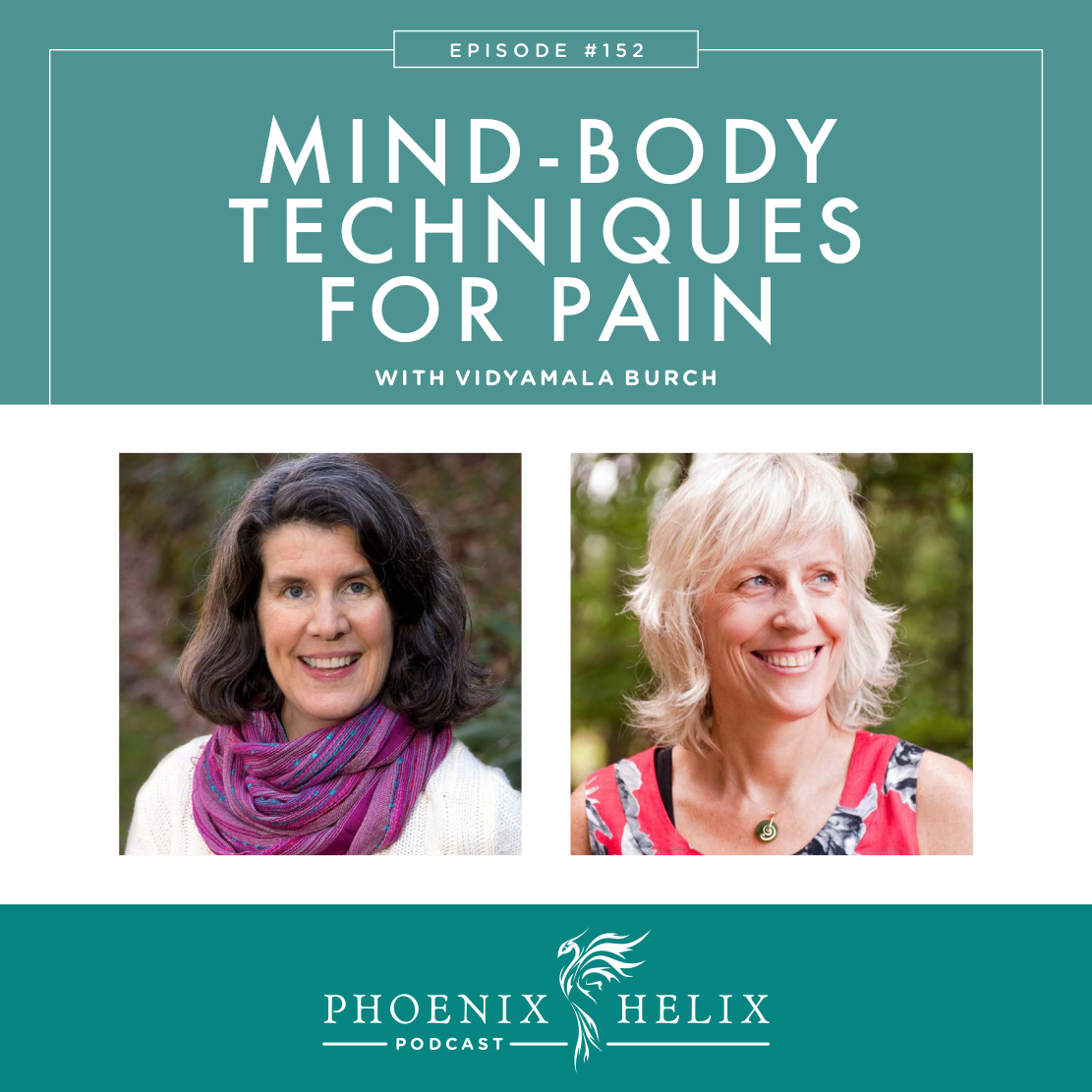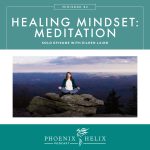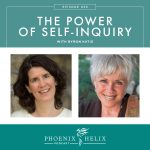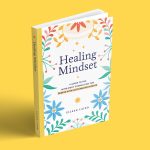Can the Mind Soothe Physical Pain?
We hear a lot about the mind-body connection, but what are its uses and what are its limits? Are there techniques we can use to minimize pain and manage it better? How does the stress response increase pain’s intensity? How does guarding against pain add a second layer of tension that can make pain worse? Vidyamala Burch has lived with chronic pain for over 40 years. Learning how to survive and thrive started as a personal goal and later became her professional mission. She’s an author, educator, and cofounder of Breathworks, a non-profit organization that teaches Mindfulness-Based Pain Management to individuals and organizations around the world.
Listen to the Show
- Subscribe to my podcast through your favorite podcast app: iTunes, Stitcher, Google, TuneIn, Spotify, Amazon, etc.
- You can also listen to the episode right here through the player below, and if you subscribe to my newsletter you’ll get notified of future episodes.
Podcast: Play in new window | Download
Show Notes
- Intro (0:00)
- Thank You to Our Podcast Sponsor: Paleo on the Go (2:21)
- A frozen meal delivery service, 100% of their menu is compliant with the elimination phase of the paleo autoimmune protocol (AIP). They have over 5o items, including entrees, side dishes, broth, AIP-friendly bacon, and desserts.
- Use the code PHOENIX for 10% off your first order.
- Meet Vidyamala (4:01)
- Vidyamala was born with a condition that left her spine vulnerable to fracture (spondylolisthesis). She had her first back injury at age 16, which required two surgeries and began her experience with chronic pain. It was a crisis of identity because she had been a healthy and athletic teenager and suddenly wasn’t. At age 23, she was in a car accident that led to another spinal fracture. She tried to push through and ignore her pain and had a physical breakdown at age 25 that landed her in the hospital ICU. Her body was exhausted, her bladder stopped functioning, and she had to quit her career in film. This led to another crisis in identity. It was a true dark night of the soul, where she wondered if she had any purpose in life.
- She found meditation and ended up moving to the UK to study at a Buddhist retreat center. At age 37, her back deteriorated again, leading to bowel paralysis and the need for a wheelchair. This led to another identity crisis. She had been studying meditation for 10 years to support her health. Why was she having a health crisis? This led her into a deeper journey to acceptance. At age 42, she had another major surgery with complications again, and for the first time, she didn’t experience an existential crisis. While the pain was severe, she remained calm and peaceful. That was almost 20 years ago. While she continues to have chronic pain and impaired mobility, she manages it much better and hasn’t had a major health crisis since then.
- She is the author of Living Well with Pain and Illness and You Are Not Your Pain.
- She cofounded Breathworks, a non-profit organization that teaches Mindfulness-Based Pain Management to people around the world.
- Vidyamala’s First Introduction to Meditation (11:09)
- When she was in the hospital at age 25 experiencing her dark night of the soul, the hospital chaplain guided her in a positive visualization. She was astounded by the benefits. It never occurred to her that her mind could provide relief from pain and suffering.
- After leaving the hospital, she was bed-bound for months. She spent that time learning more about meditation through books and cassettes. Vidyamala had been trapped in a pain reaction cycle for 10 years. Through meditation, she slowly started to become aware of the tension she held and to begin unwinding it.
- What’s the Difference Between Mindfulness and Meditation? (17:23)
- Mindfulness is the quality of awareness: becoming more aware, present, awake, and kind in your daily life.
- Meditation is the time spent training that quality of awareness.
- An analogy would be physical fitness and exercise. Exercise helps develop fitness. Meditation helps develop mindfulness.
- Is Meditation a Religious Practice? (18:17)
- Vidyamala is Buddhist and draws on the Buddhist tradition of training the mind. But these are secular non-religious techniques that can blend with any faith.
- Two Layers of Pain (20:22)
- Primary Suffering: The unpleasant sensations happening in your body at this moment.
- Secondary Suffering: What happens when we resist those sensations, which is an automatic human response to pain. We hold our breath and guard against it, developing a second layer of muscular tension over the original pain. We also have negative thoughts (catastrophizing), alongside challenging emotions (fear, panic, anger, grief, depression). We might choose denial and hectic distraction, anything to avoid feeling the pain.
- Pain + Resistance = a higher level of suffering. We aren’t aware of these two layers. We just feel awful on every level. What would your pain feel like without the secondary layer?
- Mindfulness for pain management is a practice of accepting the primary experience, noticing the ways you resist, and learning to soften that resistance.
- Thank You To Our Podcast Sponsor – Luminance Skincare (28:50)
- Today I’d like to highlight their Intro Kit – It’s a great way to sample their products at a low cost. It contains three bestsellers in their facial skincare line: Delicate Cleanser, Rosewater Toner, and your choice of moisturizer: Hydration or Deep Hydration. The regular hydration lotion is perfect for people with oily or combination skin. The deep hydration lotion is ideal for people with dry or mature skin.
- Whereas conventional skincare products are full of chemicals that can hurt our bodies, Luminance is made from ingredients that nourish. Their products are natural, organic, wildcrafted, non-GMO, and gluten-free (and they’re even made in a dedicated gluten-free facility).
- They have a complete face and body care line, including cleansers, toners, moisturizers, masks, acne serum, sunscreen, haircare, and more.
- Place an order here, and use the code HELIX for 10% off your first order.
- What Are Blocking & Drowning Behaviors? (30:41)
- Secondary suffering falls into two patterns: blocking the pain vs. drowning in the pain. Most of us swing between these two behaviors, although we might default to one of them first.
- Blocking = denial. Here, you harden yourself against the pain, live in your head instead of your body, seek distraction, busyness, and overwork. You power through until your body can’t take it anymore and crashes.
- Drowning = overwhelm. Here, you have a tendency toward depression, low energy, low mood, and low productivity. Your pain and disability become your whole world.
- Vidyamala’s personal tendency is to block, and when she was younger she would live in a blocking pattern for months and then crash so hard she would wind up bedridden for months. Now after training in mindfulness, she still has the blocking impulse, but she’s aware of it and chooses to balance her work with rest. She knows her body and what it needs. The reward for this awareness is that she hasn’t had a serious health crisis in 20 years.
- It’s Not About Perfection (34:32)
- Seek progress, not perfection. Mindfulness is a lifelong practice, and you will get better at it over time, but perfection isn’t the goal. Resistance to pain will still arise. You’ll notice your tendency to block/drown. Each time you notice, that’s a success. Mindfulness is about awareness, and when you become aware you have a choice about how you respond.
- The Breathworks Approach (38:13)
- The Breathworks Program follows the acronym: Be AWARE.
- Be = Being aware – of body, emotions and thoughts.
- A = Acceptance – turning towards the difficult.
- W = Wonder – seeking out the pleasant.
- A = Arising & passing – living with flow, with a broader sense of perspective.
- R = Relating – building a sense of connection with others.
- E = Engaging – with life and living with choice.
- Seeking Pleasure When You’re In Pain (37:37 & 39:12)
- When we resist pain, it becomes our whole world and it’s difficult to see beyond it. The “wonder” step listed above teaches that pain isn’t our entire experience.
- It’s step 3 in their program, not the first step, because fostering awareness and acceptance is a necessary foundation before we can open to pleasure alongside pain.
- This isn’t the same as trying to “focus on the positive”, pretending the pain’s not there. That’s superficial and doesn’t work.
- It’s also not about ecstatic experiences, but rather tuning in to the simple pleasures that are within us and around us.
- Step 4 in the program is “arising and passing”. Pain can feel very solid, but when you become curious and turn toward the pain, you notice that it’s a constantly changing flow of different sensations. The same is true for pleasurable sensations. This step helps you develop a receptive state rather than a reactive one, breaking the pattern of resisting pain and attaching to pleasure.
- Making Formal Meditation Comfortable (44:20)
- If you’ve attended a traditional meditation class, the postures and expectations are often very challenging for someone experiencing pain. Vidyamala’s mission with Breathworks is to make meditation accessible to anyone, especially people living with pain and illness.
- There are two simple principles for your meditation posture: Be as relaxed as possible while still being alert.
- You can choose any posture that’s comfortable for you: sitting on a chair, lying down, standing, walking.
- If you get uncomfortable in one position for too long, it’s perfectly fine to move and shift position.
- Meditation isn’t about endurance. It’s about awareness.
- Is Meditation a Replacement for Medication? (47:19)
- Vidyamala sees meditation as a complementary practice. The goal is to help you become master of your own life and feel empowerment about your own body. In medical research, they call this an internal locus of control.
- She herself still takes pain medication, although she needs less now than she did in the past. If she takes no medication, her pain is so excruciating that she can’t meditate. She believes in taking enough medication, so that meditation is possible.
- She also supports her health in other ways: acupuncture, massage, osteopathy, and her last surgery was very beneficial. If she only allowed herself to pursue mental paths to healing, she wouldn’t be as healthy as she is with physical support as well. The key is that she is the one in charge. She consults with healthcare professionals, but the choices are hers in terms of the treatments she does and doesn’t pursue.
- Guided Meditation by Vidyamala (49:38)
- Vidyamala did a live guided meditation during the podcast.
- You can find more guided meditations by Vidyamala through Soundcloud.
- Outro (55:44)
- To learn more, please visit Vidyamala’s website or the Breathworks website. Vidyamala recommends the Mindfulness for Health online course. She has also written a book based on that program: You Are Not Your Pain.
- Eileen (your podcast host) is the author of multiple books, written to help people thrive with autoimmune disease. Learn more on the Books Page.
- If you like this podcast, follow or subscribe through your favorite podcast app. You can also subscribe to Eileen’s biweekly newsletter.
- Check out the entire archive of podcast episodes.
You May Also Be Interested In
Spreading the Word
If you like the podcast, please leave a positive review in iTunes. It would mean the world to me, and also helps others find the podcast. Here are some quick instructions using your iPhone:
- If you are already subscribed to my podcast: (1) Click the purple podcast icon. (2) At the bottom of the screen, click Library. (3) At the top of the screen, click Shows. (4) Click the Phoenix Helix podcast image. (5) Scroll down the page, and you’ll see Ratings and Reviews. Scroll down a little bit more and click on Write a Review. This will bring up the review screen. Tap 5 stars (if you love the podcast), and then click in the title box, and it will bring up the keyboard. Enter a title and short review. (6) Click Send in the upper right corner. (7) Thank you! Positive reviews give the podcast a higher search ranking in iTunes, helping people find it and letting them know it’s a quality podcast and worth their time to listen.
- If you haven’t subscribed to my podcast: (1) Click the purple podcast icon. (2) In the lower right corner, click the magnifying class. (3) Type Phoenix Helix in the search box. (4) Click the podcast cover in the Show list. (5) If you’d like to subscribe, click the + sign at the top of the screen. (6) To write a review, scroll down the page, and you’ll see Ratings and Reviews. Scroll down a little bit more and click on Write a Review. This will bring up the review screen. Tap 5 stars (if you love the podcast), and then click in the title box, and it will bring up the keyboard. Enter a title and short review. (7) Click Send in the upper right corner. (8) Thank you! Positive reviews give the podcast a higher search ranking in iTunes, helping people find it and letting them know it’s a quality podcast and worth their time to listen.








